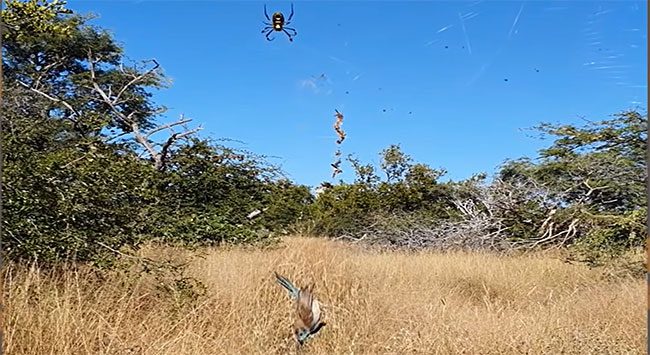The best time for visitors to encounter the most spiders in South Africa is between November and March each year.
Scientists suggest that humans may have begun to fear spiders while still inhabiting the cradle of Africa, where multi-eyed species with terrifying venom existed millions of years ago. Back then, humans frequently faced the danger of being attacked by highly venomous spiders in the conditions of the ancient environment.
Even if a spider does not kill its victim, a black widow spider can incapacitate a person for many days or even weeks, leaving the victim unable to protect themselves.
In fact, the fear of spiders is an instinct that was formed when humans lived in primitive conditions and had to confront multi-eyed creatures that were far more fearsome than their modern descendants.
In other words, the fear of spiders is something deeply embedded in our bones, displayed in the genetic information of humanity.
However, if we can master our fear, we can discover many fascinating aspects of the spider world, just like the story shared below.
This story was shared by a user with the nickname Brass Brassett during a healing trip at the Olifants West Wildlife Reserve in South Africa.
According to the video clip, viewers can clearly see a small bird caught in the web of a spider. Despite the bird’s frantic efforts to escape, the stickiness of the spider silk is too strong for it to overcome. As a result, it must give up and becomes a tasty meal for the predator.
The creator of this intricate and seemingly delicate “heavenly net” is the Golden Orb spider, also known as Nephila. This vividly colored spider is fascinating and can be found in South Africa.
Scientists often refer to the Nephila spider by various names such as: banana spider, golden silk spider, and snake-eating spider. They can grow to nearly 6 cm in size, excluding leg length, and females are usually larger than males.
Male Nephila spiders often meet a gruesome fate after mating, being “torn apart” or wrapped tightly in the web to become food for the females when they cannot maintain their composure.
The Nephila spider has the ability to spin very thick and sturdy webs to hunt prey. The length of each web can reach nearly 2 meters.
Small insects that get caught in their webs typically cannot escape. Even small snakes and birds can fall victim to them. Hence, they are also called the snake-eating spider.
When prey gets ensnared in the spider’s web, it is also subjected to neurotoxic venom, which gradually paralyzes the victim.

Nephila spider ensnaring a bird.
Researchers believe that the notion of spider webs being merely a net for trapping prey is insufficient. Spider silk not only serves as an adhesive web but also acts as a weapon to paralyze the prey with neurotoxic venom.
The neurotoxins of the Nephila clavipes spider are not very potent, as their purpose is only to incapacitate the prey. More importantly, spiders only consume live prey. If the neurotoxin were too strong, the prey could die, and the spider would be unable to feed later.


















































